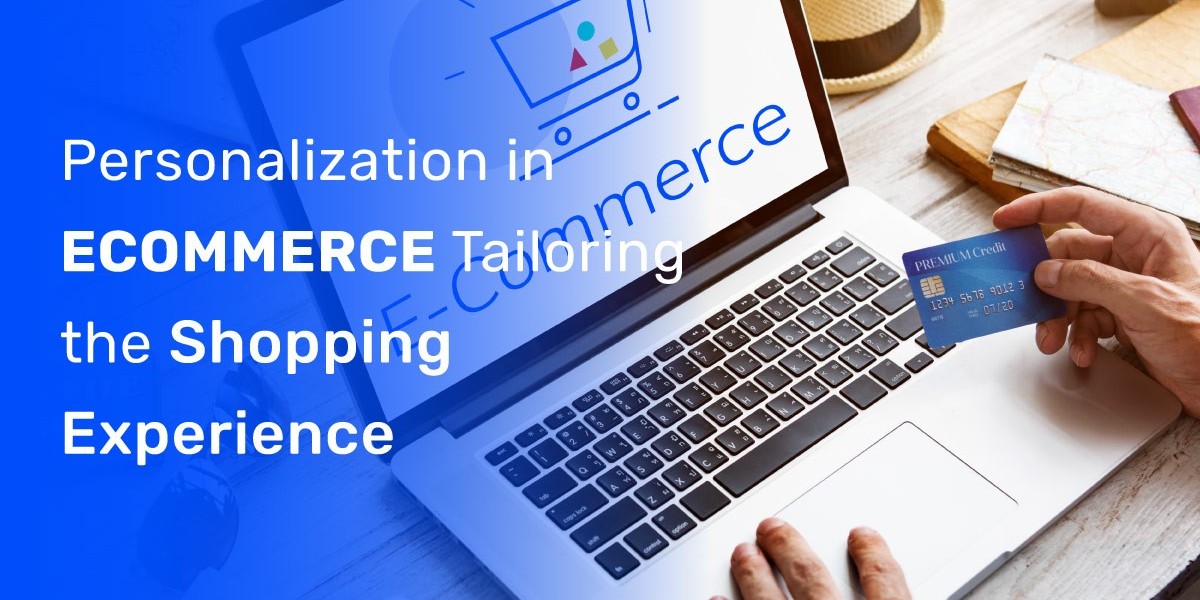In today's digital age, the eCommerce landscape is rapidly evolving, and online retailers are continually seeking innovative ways to attract and retain customers. One of the most effective strategies for enhancing customer engagement and driving sales is personalization. By tailoring the shopping experience to individual preferences and needs, businesses can create a more meaningful connection with customers, leading to increased loyalty and higher conversion rates. In this blog post, we will explore the importance of personalization in eCommerce and how businesses can effectively implement personalized shopping experiences.
The Power of Personalization
Personalization in eCommerce refers to the practice of using data and technology to deliver tailored content, product recommendations, and offers to individual customers. It involves understanding customer behavior, preferences, and purchase history to create a customized shopping journey. The power of personalization lies in its ability to make customers feel valued and understood, transforming their shopping experience from a transactional interaction to a personalized journey.
Customized Product Recommendations:
Effective personalization starts with providing customers with relevant and timely product recommendations. By analyzing past purchase behavior and browsing patterns, eCommerce platforms can suggest products that align with each customer's interests. These recommendations can be displayed on the homepage, product pages, or through personalized emails, enticing customers to explore and make additional purchases.
Personalized Content and Messaging:
Tailoring the content and messaging to suit the customer's preferences and demographics is crucial in creating a personalized shopping experience. Utilizing customer data, businesses can send personalized email campaigns, targeted promotions, and product updates that are likely to resonate with each customer segment.
Dynamic Pricing and Offers:
Dynamic pricing is another aspect of personalization that can significantly impact customer behavior. By adjusting prices based on factors like browsing history, purchase frequency, and location, eCommerce retailers can provide personalized discounts and offers that motivate customers to make a purchase.
Personalized Landing Pages:
Creating personalized landing pages for specific customer segments can enhance user experience and increase conversions. These landing pages can be designed based on customers' interests, geographical location, or past interactions with the website, ensuring that customers find relevant content and products as soon as they arrive opined an eCommerce website design company in Bangalore.
Customized User Accounts:
Offering personalized user accounts can enhance the shopping experience and encourage repeat purchases. By allowing customers to save their preferences, payment information, and wish lists, businesses can streamline the checkout process and foster a sense of familiarity and convenience.
Location-Based Personalization:
Location-based personalization takes advantage of a customer's geographic location to offer relevant content and promotions. Businesses can provide localized product recommendations, shipping information, and relevant news, making customers feel more connected to the brand.
Personalized Customer Service:
Personalization extends beyond the shopping process to customer service interactions. By utilizing customer data to understand their needs and previous inquiries, businesses can provide more efficient and personalized customer support, leading to increased customer satisfaction and loyalty.
Implementing Personalization:
To effectively implement personalization in eCommerce, businesses need to invest in the right technology and tools. Here are some essential steps to get started:
Data Collection and Analysis:
The foundation of personalization is data. Collect and analyze customer data, including purchase history, browsing behavior, demographics, and preferences. Use this data to segment customers into specific groups to create personalized experiences.
Implement Personalization Technology:
Leverage personalization software and tools that integrate with your eCommerce platform to deliver personalized content, product recommendations, and offers to customers in real-time.
A/B Testing:
Conduct A/B testing to evaluate the effectiveness of your personalization efforts. Test different personalized elements, such as product recommendations, email subject lines, and landing page designs, to optimize your personalization strategy continually.
Focus on Privacy and Security:
With the increasing emphasis on data privacy, it's essential to prioritize customer data protection. Implement robust security measures to safeguard customer information and ensure compliance with data protection regulations.
Monitor and Analyze:
Continuously monitor the performance of your personalization efforts and analyze customer engagement, conversion rates, and sales. Use these insights to refine your personalization strategy and improve the customer experience.
Benefits of Personalization in eCommerce
The implementation of personalization in eCommerce offers numerous benefits for both businesses and customers:
Improved Customer Experience:
Personalized shopping experiences create a sense of individual attention, leading to increased customer satisfaction and loyalty. Customers feel valued when their preferences are taken into account, leading to repeat purchases and positive word-of-mouth.
Increased Conversion Rates:
Relevant product recommendations and personalized offers can significantly increase conversion rates. By presenting customers with products that align with their interests, they are more likely to make a purchase.
Higher Average Order Value:
Personalization can also lead to higher average order values as customers are more likely to explore and add complementary products suggested to them.
Reduced Cart Abandonment:
A personalized shopping experience can help reduce cart abandonment rates. By offering tailored incentives, such as personalized discounts or limited-time offers, customers are encouraged to complete their purchase.
Enhanced Brand Loyalty:
When customers feel understood and valued, they are more likely to become loyal to the brand. Personalization can foster long-term relationships with customers, increasing their lifetime value.
Competitive Advantage:
In a competitive eCommerce landscape, personalization can be a key differentiator. Brands that offer personalized shopping experiences are more likely to stand out and attract and retain customers in the long run.
Conclusion
Personalization in eCommerce is a powerful strategy that can transform the shopping experience for customers. By leveraging data and technology, businesses can deliver tailored content, product recommendations, and offers that resonate with individual customers. Implementing personalization in an eCommerce store can lead to improved customer experiences, increased conversion rates, higher average order values, and enhanced brand loyalty. As the eCommerce industry continues to evolve, businesses that prioritize personalization will gain a significant competitive advantage, driving growth and success in the digital marketplace.








